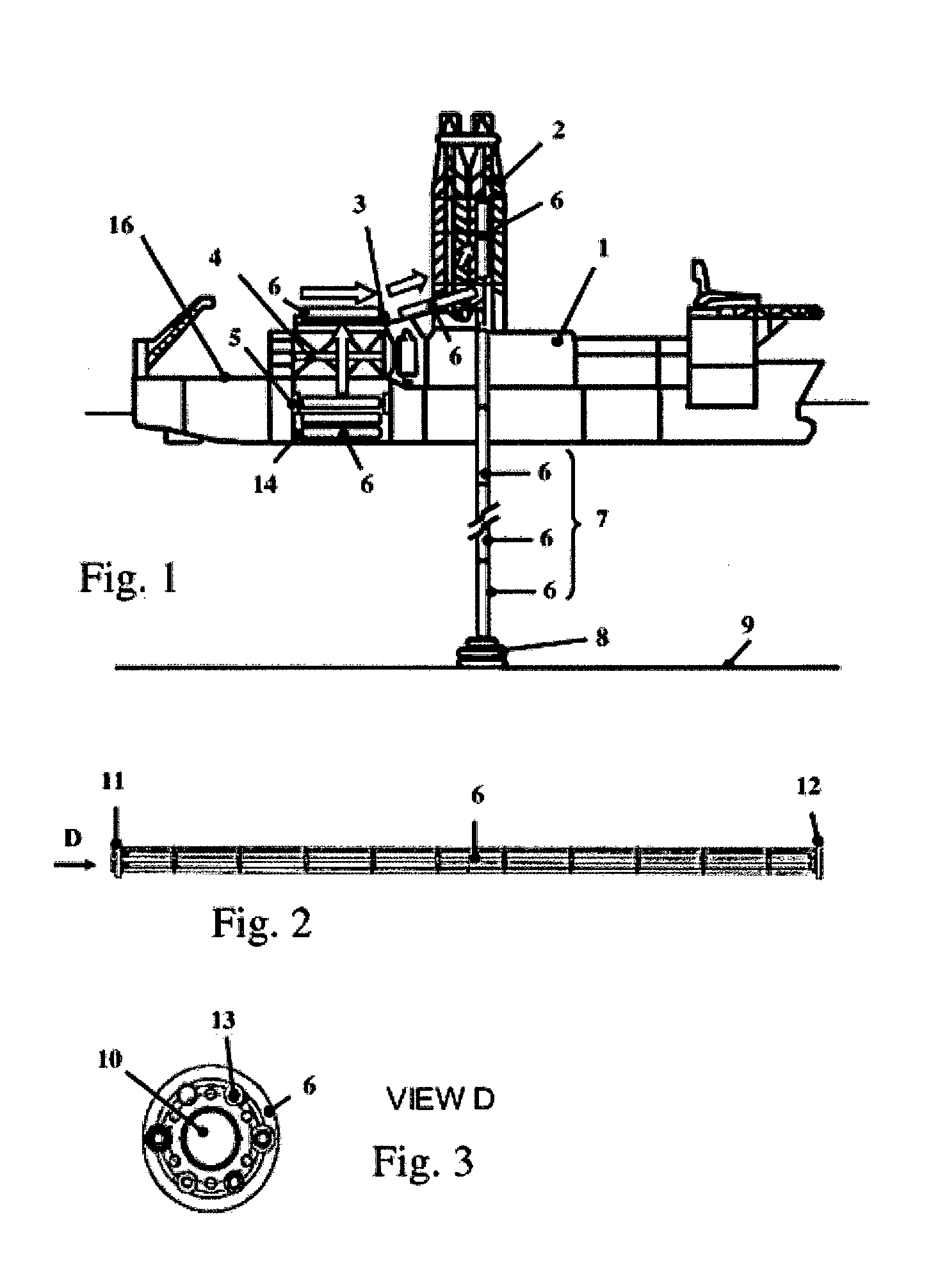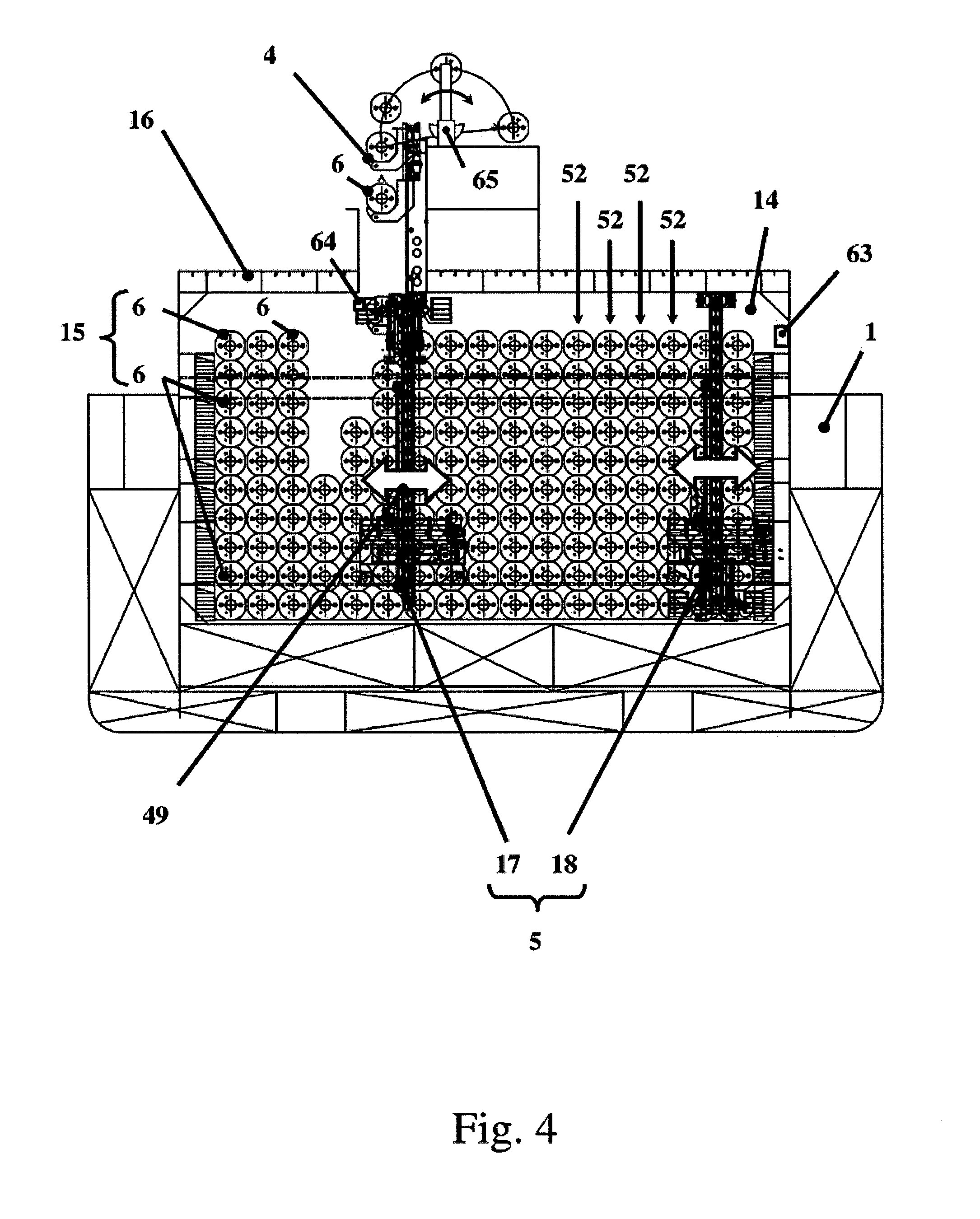System for handling riser pipe
a technology of riser pipe and moving system, which is applied in the direction of pipe-laying vessels, earth-moving drilling and mining, drilling accessories, etc., can solve the problems of reducing the performance of the crew, exposing the operators themselves to conditions of possible danger, and poor automation of the process, so as to reduce the number of transfer of tubular elements or risers between different types of machines, the effect of reducing the number of transfers
- Summary
- Abstract
- Description
- Claims
- Application Information
AI Technical Summary
Benefits of technology
Problems solved by technology
Method used
Image
Examples
Embodiment Construction
[0081]With reference to the figures (FIG. 1) the present invention finds application in the movement of tubular elements (6) from a storage zone (14) of a vessel (1) towards at least one laying or use zone (2) of the tubular elements. For example, without limitation for the purpose of the present invention, in the case of a drillship or in the case of a semisubmersible drilling rig, the tubular elements will be risers that are taken from a storage zone (14) that can be a hold or a deposition zone on the deck. The risers (6) are (FIG. 2, FIG. 3) normally tubular elements flanged in correspondence with a first end (11) and in correspondence with a second end (12) that are opposite ends with respect to the longitudinal development of the tubular element in the form of a riser. The riser (FIG. 3) includes a main hole (10) and a number of auxiliary lines (13) for the passage of the control fluids, as well as floating pushing elements inserted around the structure of the riser itself. Onc...
PUM
 Login to View More
Login to View More Abstract
Description
Claims
Application Information
 Login to View More
Login to View More - R&D
- Intellectual Property
- Life Sciences
- Materials
- Tech Scout
- Unparalleled Data Quality
- Higher Quality Content
- 60% Fewer Hallucinations
Browse by: Latest US Patents, China's latest patents, Technical Efficacy Thesaurus, Application Domain, Technology Topic, Popular Technical Reports.
© 2025 PatSnap. All rights reserved.Legal|Privacy policy|Modern Slavery Act Transparency Statement|Sitemap|About US| Contact US: help@patsnap.com



